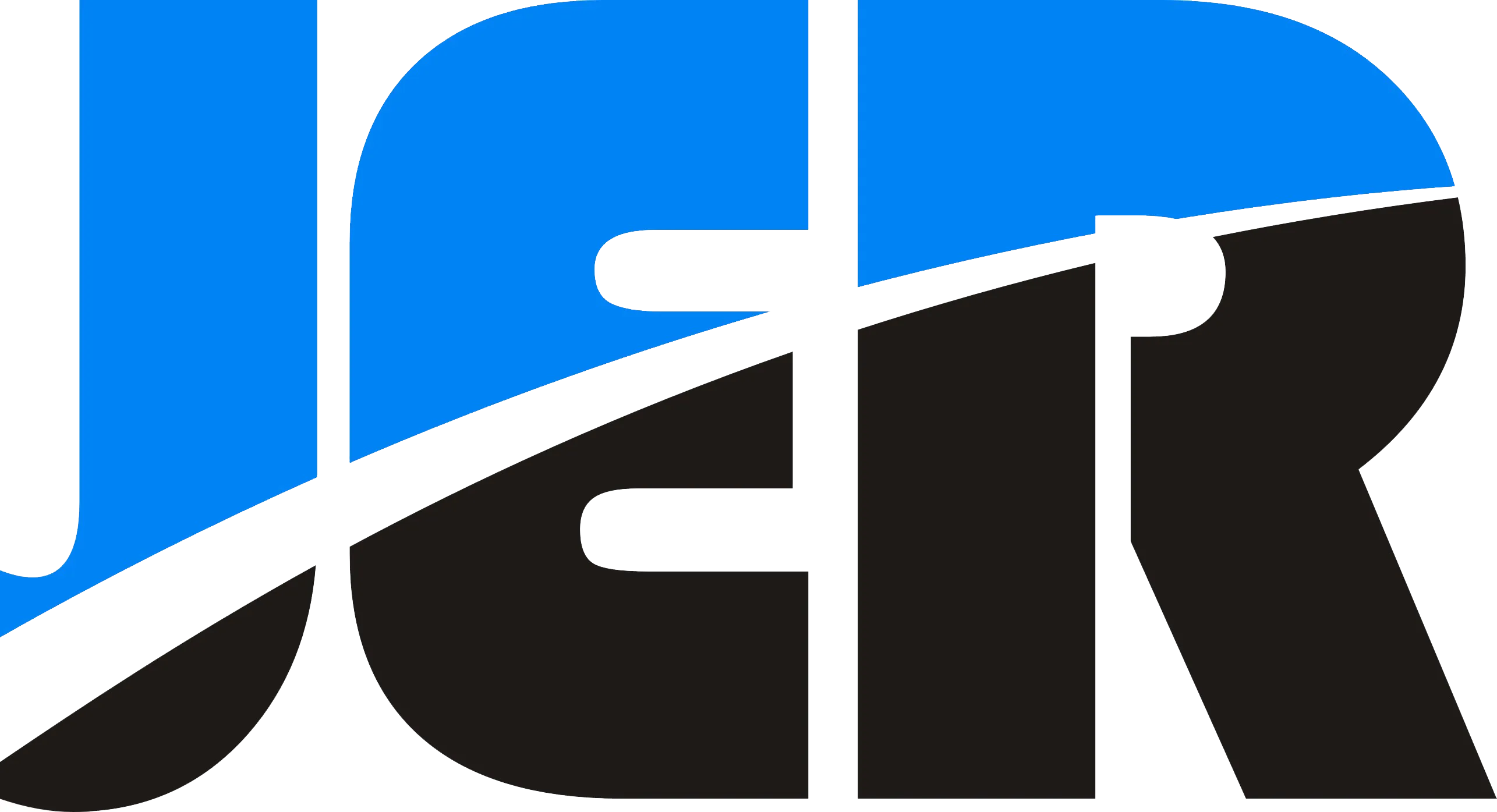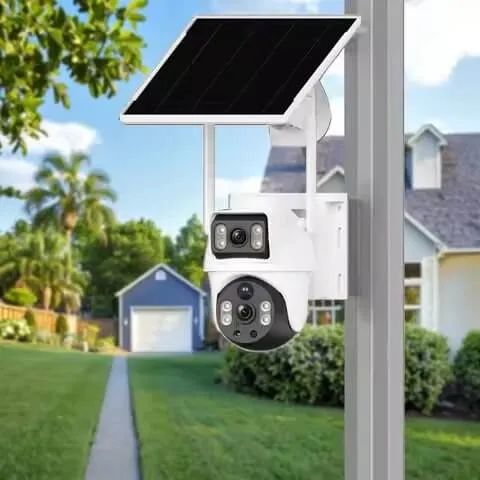TOP 10 4G AOV Solar Camera Suppliers In China: Complete 2025 Guide
🏆 Quick Comparison: Top 4G AOV Solar Camera Suppliers
| Supplier | Experience | Price Range | Key Feature |
|---|---|---|---|
| Shenzhen JER Technology | 15+ Years | $65-180 | OEM/ODM Specialist |
| Hikvision | 20+ Years | $120-350 | AI Tracking |
| FSAN Technology | 12+ Years | $85-220 | 8MP Resolution |
| LS Vision | 15+ Years | $90-200 | 24/7 Recording |
Finding the right 4G AOV solar camera supplier in China can feel overwhelming. With hundreds of manufacturers claiming to be the best, how do you choose wisely? Moreover, the Always On Video (AOV) technology is transforming security cameras by providing continuous recording while using minimal power. This comprehensive guide reveals the top 10 4G AOV solar camera suppliers in China for 2025, helping you make informed decisions for your business.
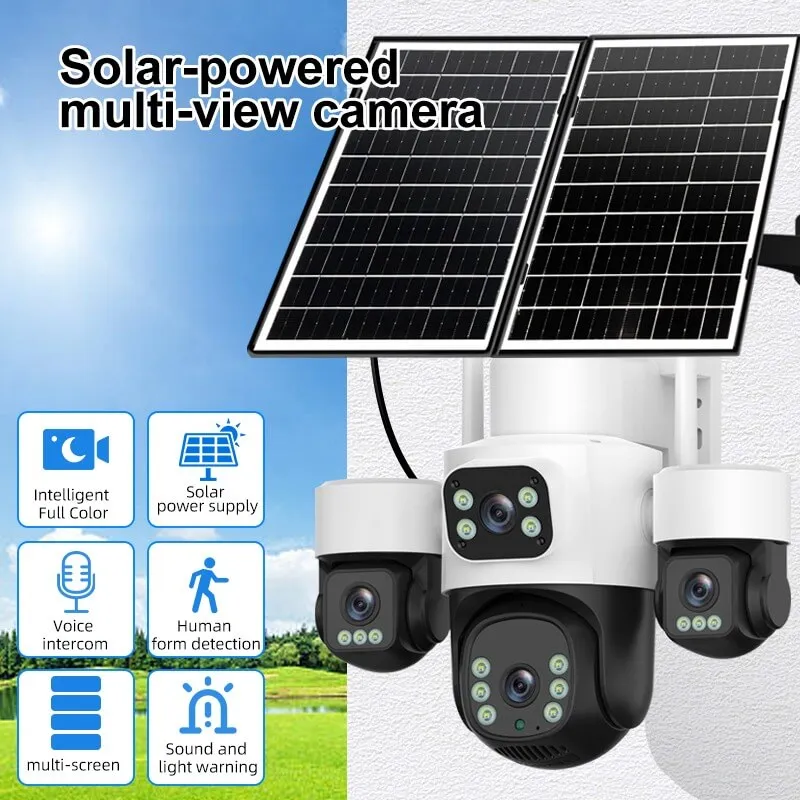
Top 10 4G AOV Solar Camera Suppliers in China (2025)
After extensive research and analysis of market data, delivery records, and customer reviews, here are the leading 4G AOV solar camera suppliers in China that consistently deliver quality products. These suppliers were selected based on their experience, product innovation, manufacturing capacity, and global export success.
Complete Supplier Rankings and Analysis
1. Hikvision (Hangzhou)
As the global leader in surveillance technology, Hikvision offers premium 4G AOV solar cameras with advanced AI tracking capabilities. Their solar-powered PTZ cameras feature intelligent motion detection and seamless 4G connectivity. Furthermore, their products include weather-resistant designs and enterprise-grade security features. However, pricing tends to be higher due to brand premium and advanced technology integration.
2. Shenzhen FSAN Intelligent Technology Co., Ltd.
Specializing in high-resolution 4MP-8MP solar PTZ cameras, FSAN Technology excels in AOV low-power technology implementation. Additionally, their factory-direct approach ensures competitive pricing without compromising quality. Their cameras offer exceptional night vision capabilities and robust solar panel efficiency. Most importantly, they provide excellent customization options for OEM partners.
3. Shenzhen JER Technology Co., Ltd.
With over 15 years of CCTV manufacturing experience, JER Technology stands out as a reliable OEM supplier for 4G AOV solar cameras. Their product range includes various lens angles up to 110°, making them suitable for diverse applications. Furthermore, they supply to over 50 countries globally, demonstrating their international quality standards. Their competitive advantage lies in customizable solutions and responsive customer service.
The AOV technology represents a significant leap in solar camera efficiency. Companies like JER Technology are leading this innovation by combining continuous recording with intelligent power management.” – Dr. Sarah Chen, Security Technology Analyst at TechInsight Research
4. Shenzhen Vstarcam Technology
Operating for over 14 years with impressive delivery rates of 99.6%, Vstarcam Technology specializes in Wi-Fi/4G hybrid cameras. Their revenue exceeds $890K annually, indicating strong market presence. Additionally, their cameras feature user-friendly mobile apps and cloud integration capabilities. Their strength lies in reliable delivery and consistent product quality.
5. Hsmartlink/Mycam (Shenzhen)
As pioneers in 4G solar camera technology, Hsmartlink introduced AOV for continuous recording applications. Their app-integrated solutions provide seamless user experience across multiple platforms. Moreover, their cameras offer excellent battery management and solar charging efficiency. They focus primarily on residential and small business markets.
Remaining Top Suppliers (6-10)
The remaining top suppliers include Uboxcam, LS Vision, Accio, Bokysee, and iCSeecam, each bringing unique strengths to the market. For instance, LS Vision excels in AOV innovation with 2K-4K models, while Bokysee focuses on farm and construction applications. Similarly, these suppliers offer competitive pricing, customization options, and reliable delivery services across global markets.
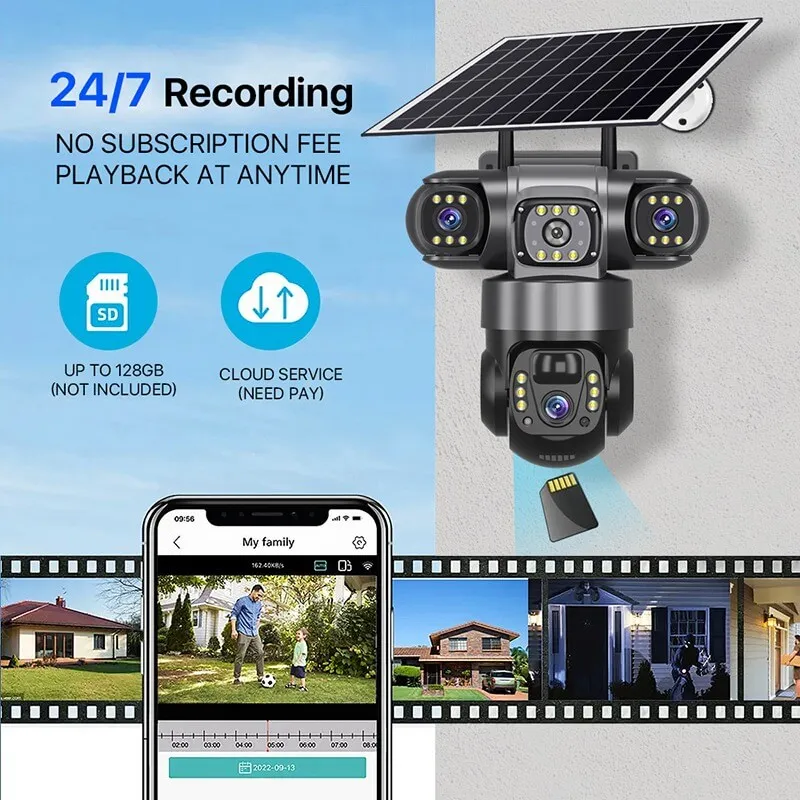
What is 4G AOV Solar Camera Technology?
Understanding 4G AOV solar camera technology is essential before making purchasing decisions. This innovative technology combines three key components: solar power, 4G connectivity, and Always On Video functionality. Together, these elements create a comprehensive surveillance solution that works independently of traditional power and internet infrastructure.
Breaking Down AOV Technology
AOV stands for “Always On Video”, which represents a revolutionary approach to power management in security cameras. Unlike traditional PIR (Passive Infrared) cameras that only record when motion is detected, AOV cameras maintain continuous surveillance. However, they achieve this through intelligent frame rate adjustments that conserve battery power while ensuring no events are missed.
Specifically, AOV cameras operate at 1-2 frames per second during idle periods and automatically increase to 15-25 fps when motion or events are detected. This smart power management allows continuous monitoring without draining solar batteries quickly. Consequently, users get complete security coverage without the gaps that traditional motion-triggered cameras often experience.
4G Connectivity Advantages
The integration of 4G LTE connectivity eliminates the need for Wi-Fi networks or wired internet connections. This feature makes these cameras perfect for remote locations such as construction sites, farms, or off-grid properties. Furthermore, 4G connectivity provides reliable data transmission even in areas with limited internet infrastructure.
Modern 4G AOV cameras support global LTE bands, ensuring compatibility across different regions and countries. Additionally, they offer features like remote viewing, real-time alerts, and cloud storage through mobile applications. Most importantly, 4G connectivity enables immediate notification of security events regardless of location.
Solar Power Integration
Solar power integration typically includes 6-20W solar panels paired with 9,000-16,000 mAh batteries. This combination provides 7+ days of continuous operation even during cloudy weather conditions. Moreover, high-efficiency solar panels with up to 20% conversion rates ensure consistent charging throughout daylight hours.
The solar charging system automatically manages power distribution between camera operation and battery charging. Therefore, users can deploy these cameras in completely off-grid locations without worrying about power supply or electricity costs.
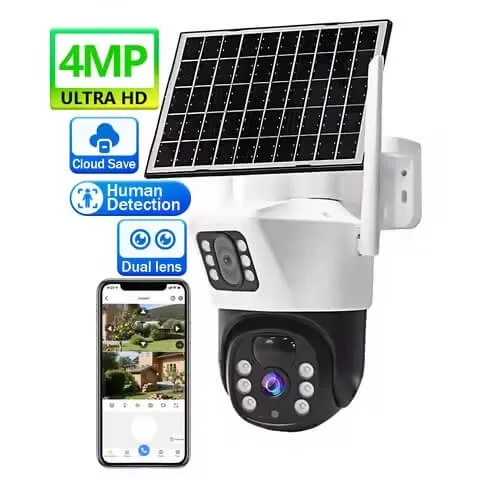
Why Choose 4G AOV Over Traditional Solar Cameras?
The decision between 4G AOV solar cameras and traditional PIR models significantly impacts security effectiveness and operational costs. Understanding these differences helps buyers make informed choices based on their specific surveillance needs and budget constraints.
Continuous vs. Triggered Recording
Traditional PIR solar cameras rely on motion sensors to trigger recording, which can result in missed events or delayed activation. Research shows that PIR cameras can miss up to 30% of security events due to sensor limitations or environmental factors. In contrast, AOV cameras provide uninterrupted surveillance through continuous recording capabilities.
AOV technology ensures that every moment is captured and stored, eliminating the risk of missing critical incidents. For example, a traditional PIR camera might miss a burglar who moves slowly or stays outside the sensor’s detection range. However, AOV cameras record all activities, providing complete incident documentation for investigations or legal proceedings.
AOV technology has revolutionized solar security cameras by solving the fundamental problem of missed events. The continuous recording capability, combined with intelligent power management, makes it the preferred choice for critical security applications.” – Mark Rodriguez, Senior Security Consultant at Global Security Solutions
Power Efficiency and Battery Life
Despite continuous operation, AOV cameras actually consume less power than expected due to intelligent frame rate management. During quiet periods, the camera operates at minimal power consumption while maintaining surveillance coverage. When activity is detected, the system seamlessly increases recording quality and frame rates.
This smart power management results in extended battery life of 7-10 days even without solar charging. Furthermore, efficient solar panels ensure that batteries remain charged during daylight hours, providing virtually unlimited operation in sunny conditions. Traditional PIR cameras, while consuming less power per activation, may miss important events during their “sleep” periods.
Advanced Features and Integration
Modern 4G AOV solar cameras include AI-powered features such as human detection, auto-tracking, and smart alerts. These capabilities reduce false alarms while ensuring that genuine security threats are immediately identified and reported. Additionally, many models offer PTZ functionality, allowing remote control of camera positioning and zoom levels.
Integration with mobile apps and cloud services provides seamless access to live footage and recorded events. Users can receive instant notifications, view multiple camera feeds, and manage settings remotely through smartphone applications. This level of connectivity and control is particularly valuable for businesses managing multiple locations or properties.
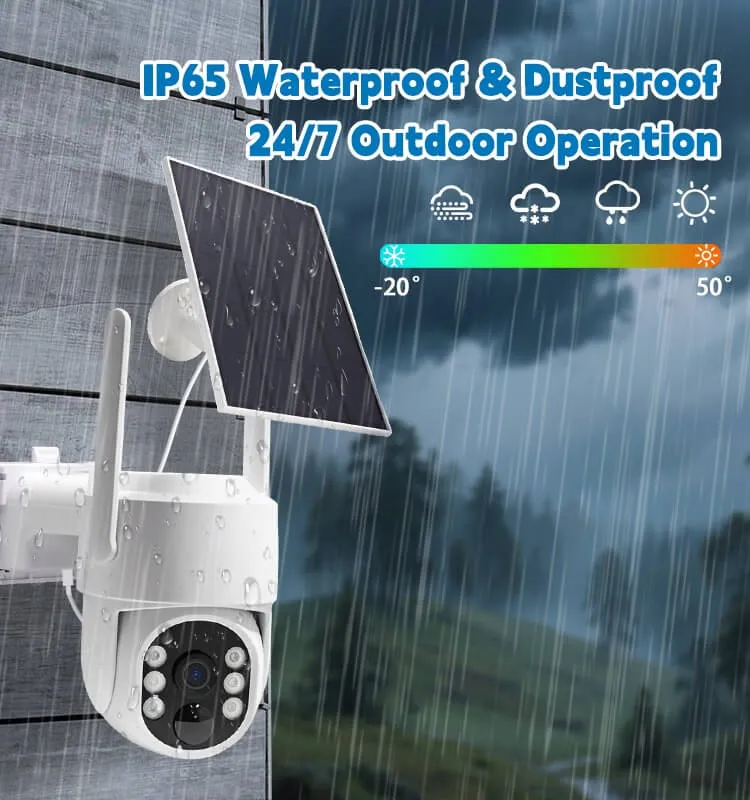
How to Choose the Right Supplier for Your Needs
Selecting the ideal 4G AOV solar camera supplier requires careful evaluation of multiple factors including product quality, pricing, support services, and long-term reliability. This systematic approach ensures that your investment delivers expected returns while meeting specific security requirements.
Assessment of Business Requirements
Start by clearly defining your surveillance needs, budget constraints, and volume requirements. Consider whether you need wholesale quantities for resale, OEM customization for private labeling, or standard products for direct use. Additionally, determine the specific features required such as resolution quality, detection range, and mobile app compatibility.
For businesses requiring customization or OEM services, suppliers like JER Technology offer extensive modification options including logo placement, packaging design, and software customization. Furthermore, evaluate your target markets to ensure that chosen suppliers can provide necessary certifications and compliance documentation.
Supplier Evaluation Criteria
Focus on key performance indicators that predict supplier reliability and product quality. Look for manufacturers with at least 10+ years of CCTV experience and relevant certifications such as ISO, CE, FCC, or RoHS. Additionally, verify their production capacity to ensure they can meet your volume requirements without compromising delivery schedules.
Customer reviews and delivery performance provide valuable insights into supplier reliability. Suppliers with 95%+ on-time delivery rates and positive feedback on platforms like Made-in-China.com typically offer better service and support. Moreover, established suppliers often provide better after-sales service, warranty coverage, and technical support.
Quality Control and Testing Procedures
Request detailed information about quality control processes and testing procedures used by potential suppliers. Reputable manufacturers conduct rigorous testing including weatherproofing verification, battery life assessment, and connectivity performance evaluation. Additionally, they should provide comprehensive product specifications and performance data.
Consider requesting product samples for evaluation before placing large orders. This allows hands-on testing of build quality, feature functionality, and mobile app performance. Most reliable suppliers, including JER Technology, offer sample programs that enable thorough product evaluation before committing to bulk purchases.
Pricing and Support Considerations
While competitive pricing is important, focus on total value rather than just initial costs. Consider factors such as warranty coverage, technical support availability, and long-term supplier stability. Suppliers offering comprehensive support services often provide better value despite slightly higher initial pricing.
Evaluate after-sales support capabilities including technical assistance, spare parts availability, and repair services. Companies with global presence, like those exporting to 50+ countries, typically offer better support infrastructure and faster issue resolution. Additionally, consider suppliers that provide training resources and marketing support for reseller partners.
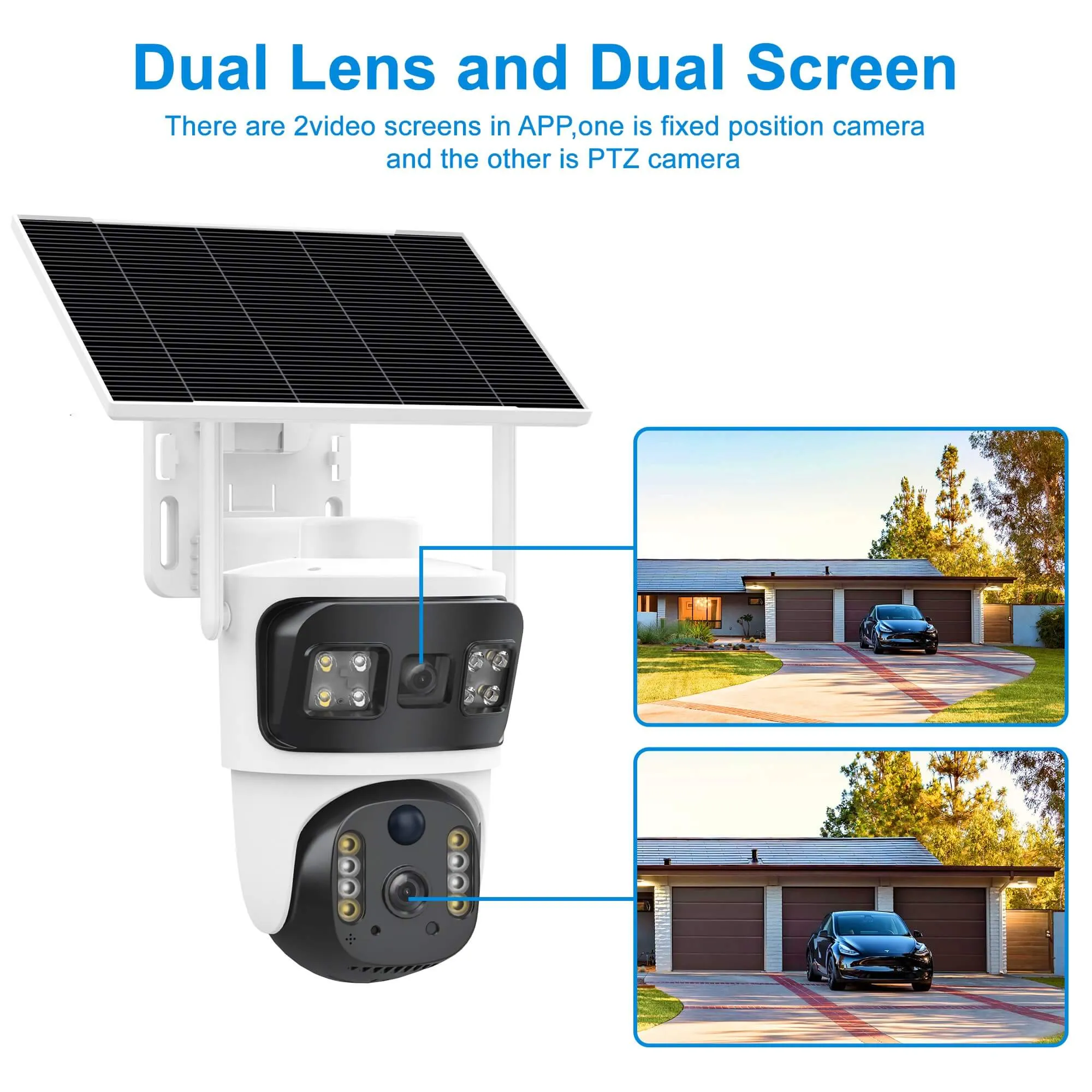
Market Trends & Pricing Guide (2025)
The 4G AOV solar camera market is experiencing unprecedented growth in 2025, driven by increasing demand for sustainable security solutions and off-grid surveillance capabilities. China maintains its dominant position as the primary manufacturing hub, producing approximately 75% of global solar security cameras with competitive pricing and advanced technology integration.
Current Market Statistics and Projections
According to recent industry reports, the global solar-powered security camera market reached $1.5-1.8 billion in 2025, representing significant growth from the previous year’s $1.2 billion valuation. This expansion reflects a compound annual growth rate (CAGR) of 14.5-19.2%, making it one of the fastest-growing segments in the security technology industry.
| Market Segment | 2024 Value | 2025 Projection | CAGR |
|---|---|---|---|
| Global Solar Security Cameras | $1.2 Billion | $1.5-1.8 Billion | 14.5-19.2% |
| Wireless Solar Cameras | $4.2 Billion | $5.5 Billion | 15-18% |
| Home Solar Camera Segment | $1.2 Billion | $1.4 Billion | 15.5% |
| China Production Share | 70%+ | 75%+ | Market Dominance |
Pricing Analysis and Cost Factors
Pricing for 4G AOV solar cameras varies significantly based on features, resolution, and supplier positioning. Entry-level models from Chinese manufacturers typically range from $50-85 per unit wholesale, while premium models with advanced AI features can cost $200-350 per unit. Mid-range options, such as those offered by JER Technology, provide excellent value at $65-180 per unit.
Several factors influence pricing including resolution quality (2K-8MP), solar panel efficiency, battery capacity, and included features. Additionally, customization requirements, order volumes, and certification needs affect final pricing. Suppliers offering OEM/ODM services typically provide better pricing for bulk orders exceeding 100 units.
Emerging Technology Trends
Key technology trends driving market growth include AI integration, improved battery efficiency, and enhanced mobile connectivity. AOV technology adoption is accelerating as users recognize the benefits of continuous recording over traditional PIR activation. Furthermore, integration with smart home systems and cloud platforms is becoming standard across most product lines.
“The shift toward AOV technology represents a fundamental change in how we approach solar-powered security. Companies investing in this technology today are positioning themselves for significant market advantages.” – Jennifer Liu, Market Research Director at Asia Tech Analytics
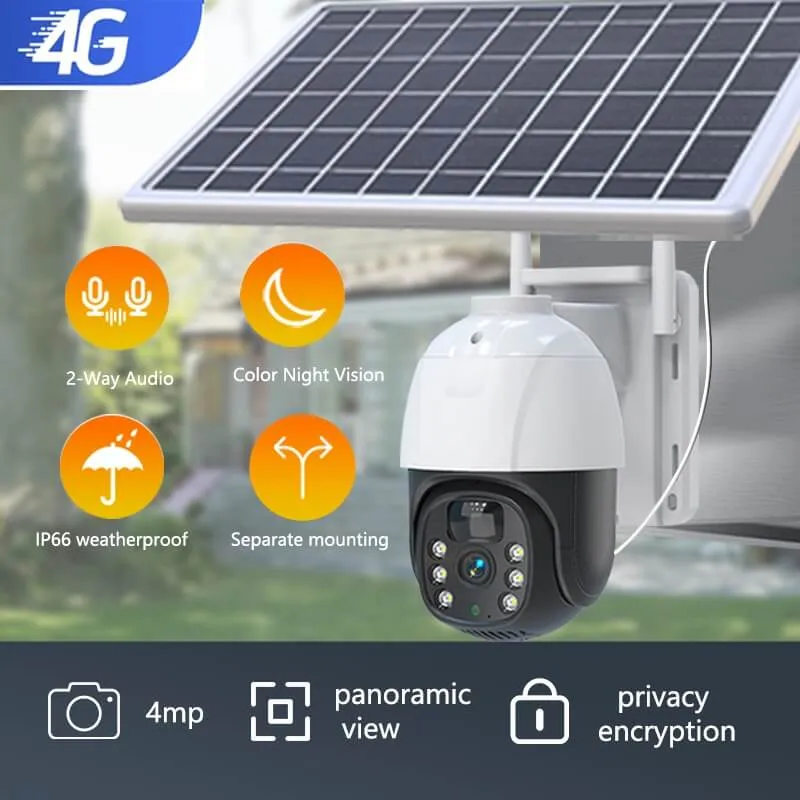
Real-World Applications & Success Stories
Understanding how 4G AOV solar cameras perform in real-world scenarios helps buyers appreciate their practical benefits and return on investment. These case studies demonstrate successful implementations across various industries and applications, showing measurable improvements in security effectiveness and cost savings.
Agricultural and Livestock Monitoring
A large-scale farm in rural China implemented LS Vision AOV cameras to monitor livestock and equipment across 500 acres of remote grazing land. The continuous recording capability captured theft attempts that would have been missed by traditional PIR cameras, resulting in a 40% reduction in livestock theft over six months. Additionally, the solar power system eliminated the need for expensive electrical infrastructure installation.
The farm owner reported that AOV technology provided complete coverage of animal behavior patterns, helping identify health issues and breeding cycles more effectively. Furthermore, the 4G connectivity enabled real-time monitoring from the main office, improving overall farm management efficiency. The system paid for itself within 18 months through reduced losses and improved operational visibility.
Construction Site Security
A major construction company deployed Hikvision 4G AOV cameras across multiple job sites to address equipment theft and unauthorized access issues. The cameras’ auto-tracking capabilities and continuous recording provided comprehensive incident documentation for insurance claims and law enforcement investigations. Most importantly, visible camera installations deterred potential thieves, reducing theft incidents by 60%.
The construction manager noted that traditional security solutions were impractical due to temporary site locations and lack of electrical infrastructure. However, solar-powered 4G cameras provided immediate deployment capability without installation delays. The wireless connectivity allowed central monitoring of multiple sites from a single security office, improving resource allocation and response times.
Remote Commercial and Industrial Applications
A Shenzhen-based warehouse complex utilized FSAN 4G AOV cameras for perimeter security and night vision monitoring. The continuous recording capability captured detailed footage of suspicious activities, leading to the identification and arrest of organized theft rings. Additionally, integration with cloud storage provided secure evidence storage and remote access for security personnel.
The facility manager emphasized that AOV technology eliminated security gaps that existed with motion-triggered systems. Intruders who previously avoided detection by moving slowly or staying outside sensor ranges were now consistently captured on video. This comprehensive coverage improved overall security effectiveness while reducing insurance premiums by 25%.
Success with JER Technology Solutions
Multiple international clients have successfully implemented JER Technology’s customized 4G AOV solar cameras across diverse applications. One notable project involved supplying 200 customized units for a European security distributor, featuring specific app integration and branding requirements. The project’s success led to additional orders totaling over 500 units within the first year.
Client feedback highlighted JER Technology’s responsive customer service and flexible customization capabilities as key differentiators. The ability to modify hardware configurations, software features, and packaging met specific market requirements that larger manufacturers couldn’t accommodate. This flexibility enabled successful market entry and competitive positioning for the distributor partner.
Installation & Setup Guide
Proper installation ensures optimal performance and longevity of 4G AOV solar camera systems. This comprehensive guide covers site preparation, mounting procedures, configuration steps, and troubleshooting tips to help users achieve professional installation results without technical expertise.
Pre-Installation Planning and Site Assessment
Begin by conducting a thorough site survey to identify optimal camera placement and solar panel positioning. Consider factors such as surveillance coverage areas, potential obstacles, and sunlight exposure patterns throughout the day. Additionally, verify 4G signal strength using a smartphone or signal meter to ensure reliable connectivity at installation locations.
Create an installation plan that includes camera mounting heights (8-12 feet recommended), viewing angles, and cable routing paths. Mark mounting locations and ensure adequate clearance for solar panels to receive unobstructed sunlight. Furthermore, consider seasonal sun angle changes that might affect solar charging efficiency during winter months.
Step-by-Step Installation Process
Installation typically takes 10-30 minutes per camera depending on mounting complexity and site conditions. Start by assembling the mounting bracket and ensuring all hardware components are included. Most suppliers, including JER Technology, provide comprehensive installation kits with detailed instructions and necessary mounting hardware.
Follow these essential steps for successful installation:
- Mount the bracket securely using appropriate fasteners for wall or pole installation
- Position the solar panel for maximum sun exposure (south-facing in northern hemisphere)
- Connect all cables including power, data, and solar charging connections
- Insert and activate the SIM card according to carrier requirements
- Power on the system and verify LED indicators show proper operation
Configuration and Mobile App Setup
Most 4G AOV solar cameras include user-friendly mobile applications for configuration and monitoring. Download the appropriate app (varies by manufacturer) and create a user account if required. Follow the app’s guided setup process to connect the camera to your account and configure basic settings.
Key configuration parameters include recording quality settings, motion detection sensitivity, alert preferences, and cloud storage options. Test all features including live viewing, recording playback, and alert notifications to ensure proper functionality. Additionally, configure user access permissions if multiple people need camera access.
Troubleshooting Common Installation Issues
Address common problems that may occur during installation or initial setup. Poor 4G connectivity issues can often be resolved by repositioning the camera for better signal reception or using external antenna accessories. Similarly, inadequate solar charging may require panel repositioning or cleaning to improve efficiency.
If cameras fail to connect to mobile apps, verify that SIM cards are properly activated and have adequate data plans. Additionally, ensure that firewall settings on your network don’t block the required communication ports. Most reputable suppliers provide technical support to help resolve installation challenges quickly.
FAQ: Common Questions About 4G AOV Solar Cameras
These frequently asked questions address the most common concerns and queries from potential buyers of 4G AOV solar cameras. Understanding these key points helps make informed purchasing decisions and sets appropriate expectations for system performance.
Battery Life and Power Management
Q: How long do batteries last in 4G AOV solar cameras?
A: Battery life varies by model and usage conditions, but most quality units provide 7-10 days of continuous operation on a single charge. Solar panels continuously recharge batteries during daylight hours, providing virtually unlimited operation in sunny conditions. During cloudy periods or winter months, battery life may be shorter but typically still exceeds 3-5 days.
Q: Do solar panels work effectively during winter or cloudy weather?
A: Yes, modern solar panels continue generating power even during cloudy conditions, though at reduced efficiency. High-quality panels can produce 10-25% of their rated output on cloudy days. During winter months, panels should be positioned to maximize available sunlight and may require occasional cleaning to remove snow or debris.
Technical Specifications and Performance
Q: What’s the difference between AOV and traditional PIR solar cameras?
A: AOV cameras provide continuous 24/7 recording with intelligent power management, while PIR cameras only record when motion triggers are activated. AOV technology reduces missed events by up to 30% and provides complete incident documentation, though it requires slightly more sophisticated power management systems.
Q: Are 4G AOV solar cameras weatherproof for outdoor use?
A: Most quality models feature IP66 or IP67 weatherproof ratings, protecting against rain, dust, and extreme temperatures ranging from -20°C to 60°C. However, verify specific IP ratings and operating temperature ranges with your chosen supplier to ensure suitability for your climate conditions.
Installation and Connectivity
Q: How difficult is installation for non-technical users?
A: Installation is designed to be straightforward, typically requiring 10-30 minutes with basic tools. Most systems include comprehensive instructions and pre-configured settings. However, some technical knowledge may be helpful for troubleshooting connectivity or configuration issues. Many suppliers, including JER Technology, provide technical support during installation.
Q: Do these cameras work with existing security systems?
A: Many modern 4G AOV solar cameras support integration with existing security platforms through APIs or RTSP streams. However, compatibility varies by manufacturer and security system type. Consult with your chosen supplier about specific integration requirements and available compatibility options.
Cost and Value Considerations
Q: What ongoing costs should I expect with 4G solar cameras?
A: Primary ongoing costs include monthly 4G data plan fees (typically $10-25 per month per camera) and optional cloud storage subscriptions. Unlike wired cameras, there are no electricity costs, and maintenance requirements are minimal. Calculate total cost of ownership including initial purchase, installation, and monthly operational expenses.
Q: How do I choose between different suppliers and models?
A: Focus on supplier experience, product certifications, warranty coverage, and customer support quality. Request samples for evaluation when possible, and verify that technical specifications meet your specific requirements. Consider suppliers with proven track records and global export experience for better long-term support.
Conclusion
Choosing the right 4G AOV solar camera supplier in China requires careful evaluation of technology capabilities, supplier reliability, and total value proposition. The suppliers featured in this comprehensive guide represent the best options available in 2025, each offering unique strengths and competitive advantages for different market segments and applications.
The AOV technology revolution is transforming solar security cameras by providing continuous recording capabilities with intelligent power management. This advancement eliminates the security gaps inherent in traditional PIR-triggered systems while maintaining the cost-effectiveness and environmental benefits of solar power. As market growth continues at 15-19% annually, early adopters are positioning themselves for significant competitive advantages.
For businesses seeking reliable OEM partnerships, Shenzhen JER Technology Co., Ltd. offers an ideal combination of experience, customization capabilities, and global support infrastructure. With over 15 years of CCTV manufacturing expertise and supply relationships spanning 50+ countries, JER Technology provides the stability and flexibility needed for successful long-term partnerships.
Take Action Today
Don’t let security gaps compromise your property protection or business operations. The 4G AOV solar camera market is evolving rapidly, and suppliers are offering increasingly competitive pricing and advanced features. Contact our recommended suppliers today to request samples, pricing information, and technical specifications that match your specific requirements.
Ready to implement cutting-edge 4G AOV solar camera solutions? Contact JER Technology for personalized consultation, custom quotes, and expert guidance on selecting the optimal camera configuration for your application. Our experienced team can help you navigate the supplier selection process and ensure successful project implementation from concept to deployment.
External Resources and Further Reading
- Cognitive Market Research: Solar Security Camera Market Analysis 2025
- Grand View Research: Wireless Security Cameras Market Report
- Archive Market Research: Solar-Powered Surveillance Camera Trends
- Security Info Watch: Solar-Powered Camera Technology Guide
- Made-in-China: Solar Security Camera Suppliers Directory
